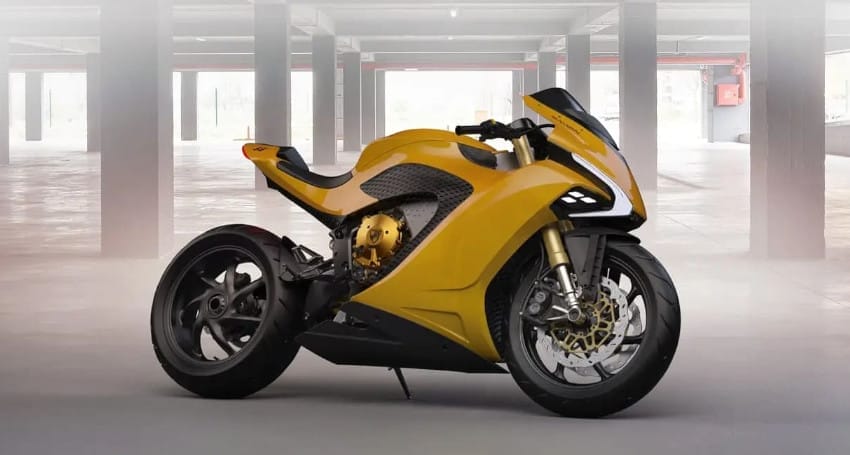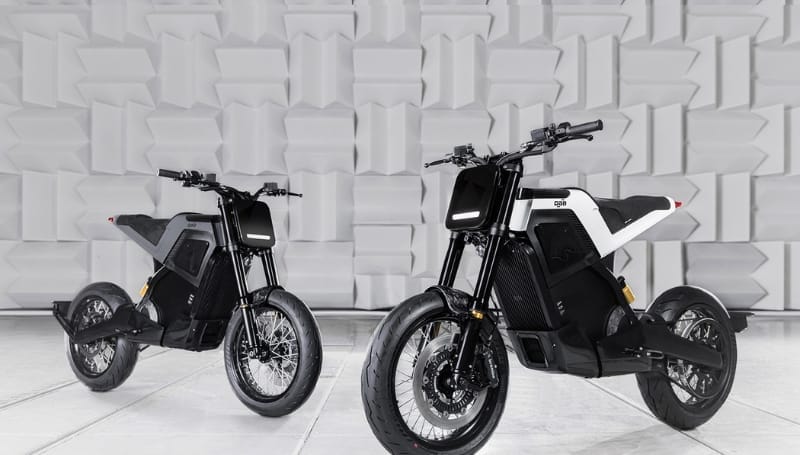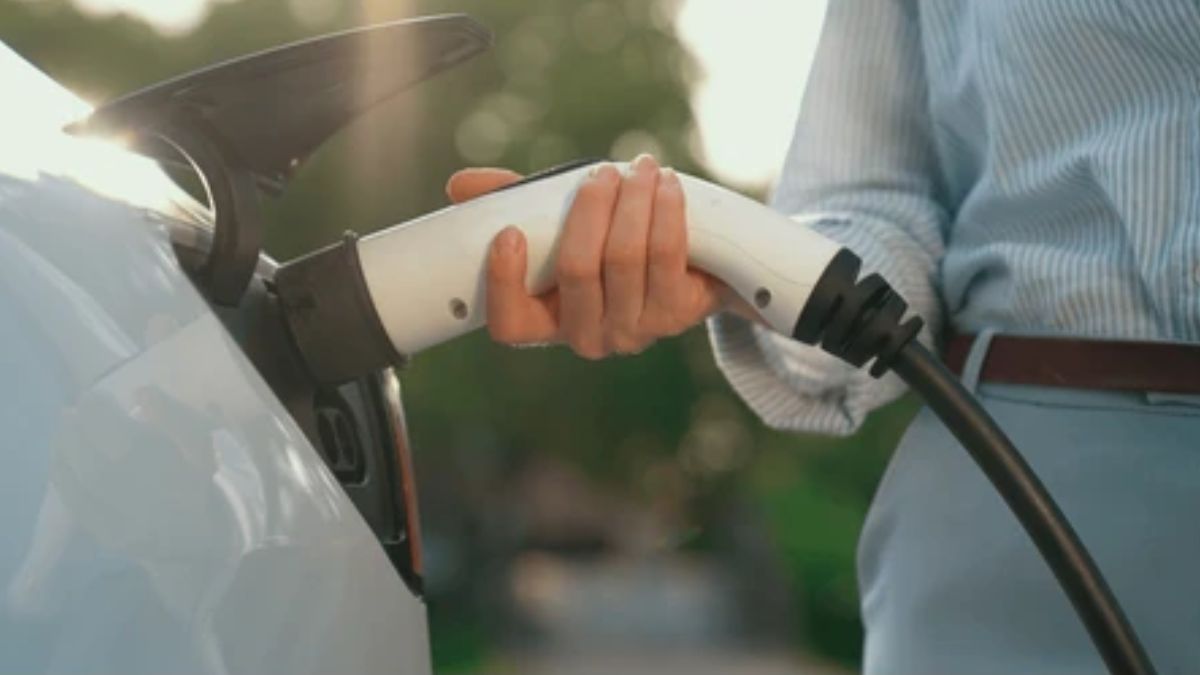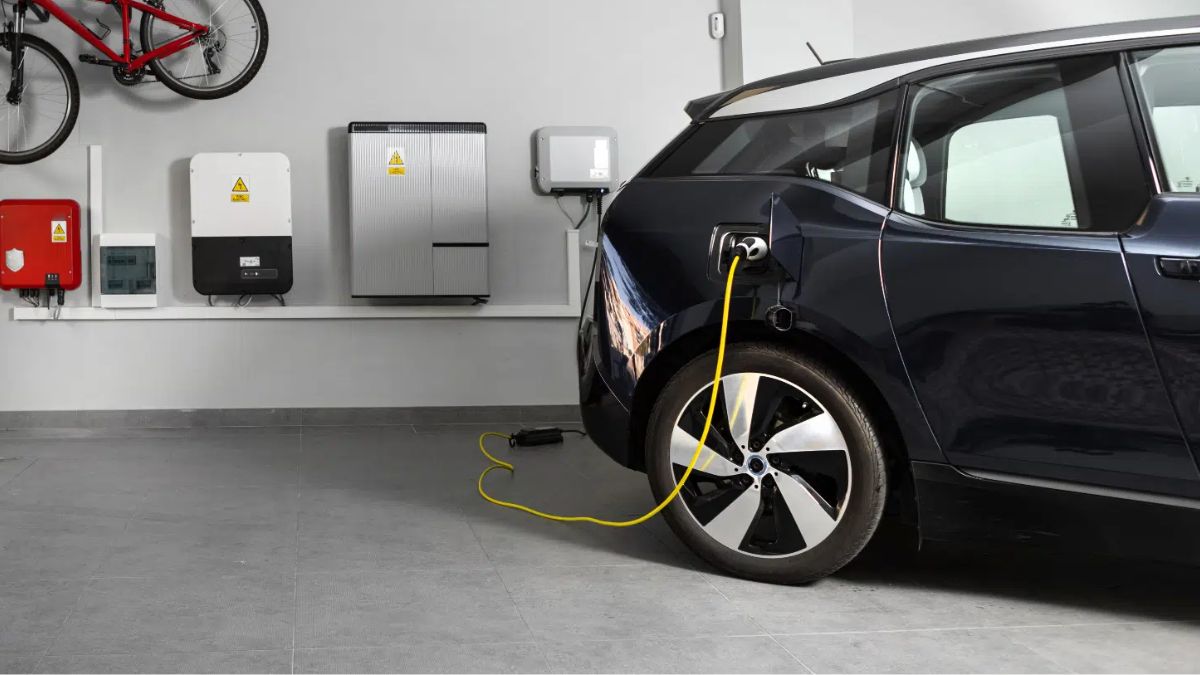
Understanding Electric Motorbike Finance
Electric motorbike finance refers to the various financial options available when purchasing an electric motorcycle. These options primarily include loans, leases, and hire purchase agreements. A loan involves acquiring money from a lender, such as a bank, to buy the electric motorcycle. The borrower then repays this debt over a predetermined period, with an added interest rate. Leasing, on the other hand, is similar to a long-term rental agreement; you make a monthly payment to use the electric motorcycle but do not own the vehicle. Hire purchase agreements are akin to leasing, but with an option to purchase the electric motorcycle at the end of the agreement. Choosing the right vehicle financing option requires careful consideration of the interest rate, repayment period length, and the total cost of the electric motorcycle, including any additional charges. Some vehicle financing options may necessitate a down payment, while others may not. It’s crucial to remember that while electric motorcycles can have a higher purchase price than petrol alternatives, they are cheaper to run and maintain. This cost-effectiveness can balance the initial cost over time. Understanding electric motorbike finance might seem complex, but with thorough research, it’s possible to find a payment plan that fits your financial situation. It’s always recommended to seek independent financial advice before entering into a financial agreement to ensure you fully understand the terms and can meet the repayments.
Why Choose Electric Motorbike Financing?
Opting for electric motorbike financing presents several advantages. Primarily, it makes owning an electric motorcycle more affordable by spreading the cost over a period, making it a viable option for those unable to make an upfront payment. Vehicle financing provides flexibility, allowing you to select a payment plan that suits your budget. You can typically choose the length of the repayment period and the amount of the monthly payments. Financing an electric motorcycle can also help improve your credit score, provided you make the repayments on time and in full. This can be beneficial for future borrowing. Some vehicle financing options, such as hire purchase agreements, offer the added benefit of ownership at the end of the agreement. This means you have the option to own the electric motorcycle outright once you’ve made all the repayments. Additionally, electric motorbike financing offers peace of mind. Many payment plans come with added benefits such as warranty coverage, breakdown cover, and scheduled maintenance. These benefits can protect your investment and reduce unexpected costs.
The Impact of Credit Types on Financing
Your credit type can significantly impact your ability to secure financing for an electric motorcycle. Lenders typically consider your credit score, past credit usage, and repayment history when assessing your loan application. A high credit score and a history of timely repayments can increase your chances of approval and result in more favourable terms, such as a lower interest rate. Different types of credit can also impact your vehicle financing options. For instance, unsecured credit, such as credit cards or personal loans, do not require any collateral but typically have higher interest rates. Conversely, secured credit, such as a mortgage or car loan, requires collateral but often comes with lower interest rates. The type of credit you choose can depend on your financial situation, the amount you wish to borrow, and your ability to provide collateral. It’s worth noting that having a mix of different types of credit can positively impact your credit score, as it shows lenders that you can manage different types of credit responsibly. However, it’s important not to take on more debt than you can comfortably repay, as missed or late payments can negatively impact your credit score and hinder your ability to secure vehicle financing in the future.

Options for Electric Motorbike Financing
Financing an electric motorcycle can be achieved through various options, each with distinct advantages and disadvantages. Personal loans, home equity loans, and dealership vehicle financing are the most common routes. The choice depends on your financial status, credit score, and personal preferences. Personal loans offer flexibility, home equity loans leverage your property’s value, and dealership financing provides a convenient payment plan. Personal loans are a popular choice for electric motorcycle financing due to their versatility. They can cover not only the purchase of the motorcycle but also additional costs such as insurance, accessories, and maintenance. Home equity loans, on the other hand, are a viable option if you have significant equity in your home. Lastly, if you prefer a convenient payment plan, dealership vehicle financing is worth considering. Before deciding, research each option thoroughly. This ensures you select the most suitable loan, considering not only the interest rate but also the loan term, lender fees, and other conditions. The aim is to secure a sustainable payment plan for your electric motorcycle.
Personal Loans: A Viable Option?
Personal loans can be a feasible option for electric motorcycle financing. These loans are typically unsecured, meaning they do not require collateral, reducing the risk to your assets. The funds from personal loans can be used flexibly, covering not only the motorcycle purchase but also associated costs. However, personal loans can present challenges. Interest rates can be high, particularly if your credit score is low. Additionally, the lack of security can result in stricter eligibility criteria from the lender. This could make securing a loan more challenging if your credit history is poor or income unstable. Despite the potential hurdles, personal loans remain a popular choice for many. It is essential to compare different loan offers, considering interest rates, loan terms, lender fees, and other conditions. This ensures you secure the most suitable loan for your electric motorcycle purchase.
Leveraging Home Equity for Financing
Home equity loans are another option for electric motorcycle financing. These loans allow you to borrow against your home’s equity. This is a viable option if you have substantial equity in your home and are confident in your ability to meet the payment plan. Home equity loans often have lower interest rates than other loans, as they are secured against your property, reducing the lender’s risk. Furthermore, the interest paid on a home equity loan is often tax-deductible, potentially reducing your debt further. However, the significant drawback of a home equity loan is the risk to your property. If you fail to meet the payment plan, the lender can foreclose on your home. Therefore, it is crucial to carefully consider your ability to meet the payment plan before choosing this financing option.
Manufacturer Financing: Pros and Cons
Manufacturer financing is a prevalent method of obtaining funds for purchasing an electric motorcycle. This type of vehicle financing offers the convenience of a one-stop solution for both the bike and the loan. Dealerships frequently offer promotional financing deals with low-interest rates, particularly to customers with a high credit score. However, these low-interest rates can be offset if dealerships mark up the loan rates for profit, leading to higher costs for the buyer. In terms of cons, manufacturer financing is usually applicable only to new motorcycles, limiting the options for used bike buyers. Additionally, the negotiation process can be complex as it involves discussions on both the price of the motorcycle and the terms of the payment plan. It’s also important to note that a significant down payment may be required, which can be a barrier for some buyers.
Government Programs: An Overview
Government programs offer another avenue for electric motorcycle financing. These programs aim to promote environmentally friendly transportation, offering incentives such as tax credits, rebates, and grants for electric vehicle purchases. These incentives can significantly lower the overall cost of owning an electric motorcycle, making it a more affordable option for many potential owners. However, the availability of these programs can vary greatly based on location, time, and the amount of funding allocated. Therefore, it’s crucial for potential buyers to research the current offerings in their area thoroughly before banking on these programs for financing. Additionally, these incentives often have specific eligibility criteria, such as income levels or electric vehicle usage, that buyers must meet to qualify.
Navigating Credit Challenges in Electric Motorbike Financing
Credit challenges can pose significant hurdles in securing vehicle financing for an electric motorcycle. A poor credit score can result in higher interest rates, larger down payments, and even outright loan denial. However, there are several strategies that individuals can employ to navigate these challenges and secure financing despite a less-than-perfect credit score. Improving your credit score before applying for a loan is one such strategy. This improvement can be achieved by paying off outstanding debts, making timely payments, and correcting any errors on your credit report. Another strategy is to consider a co-signer with a good credit score. This co-signer can increase your chances of loan approval and potentially secure a lower interest rate. Lastly, shopping around for the best loan terms can also be beneficial. Different lenders have different criteria, and some may be more willing to work with individuals with credit challenges.
Can You Secure Financing with Bad Credit?
Securing vehicle financing with bad credit can be challenging, but it is not impossible. There are lenders who specialize in bad credit loans, providing financing options for individuals with low credit scores. These loans, however, typically come with higher interest rates to compensate for the increased risk to the lender. Alternative financing options, such as personal loans or credit cards, can also be considered. Although these options may also come with higher interest rates, they might be more accessible for individuals with bad credit. Another alternative is to save for a larger down payment. This strategy can reduce the amount you need to borrow, thereby increasing your chances of loan approval. Regardless of the method chosen, it is crucial to carefully consider the terms of any loan to ensure it is a financially viable option in the long term.

Interest-Free Financing Options for Electric Motorcycles
Electric motorcycles, known for their eco-friendly features and high-tech capabilities, are increasingly becoming a preference for many. However, the initial investment can be a barrier for potential buyers. To counter this, several vehicle financing options, including interest-free loans, are now available. Interest-free financing for electric motorcycles is a scheme where the loan is repaid without any interest rate over the loan period. This financing option effectively eases the financial burden by allowing you to repay only the principal amount, making it an attractive option for potential electric motorcycle owners without putting a strain on their budget. Various lenders and motorcycle dealers provide interest-free vehicle financing options. These options may vary in terms of payment plan, down payment, and terms and conditions. Therefore, it’s crucial to thoroughly research and compare different interest-free vehicle financing options before making a decision.
Understanding Interest-Free Financing
Interest-free financing is a credit facility where the borrower is not required to pay any interest rate over the borrowed amount. In the context of electric motorcycles, it means you can purchase your vehicle and repay the loan over a certain period without any additional interest charges. While interest-free financing may seem like a debt-free loan, it is not entirely free. Most interest-free vehicle financing options require a down payment at the time of purchase. Moreover, if you fail to repay the loan within the agreed payment plan, you may have to pay interest or penalty charges. Interest-free financing is typically offered as a promotional strategy by lenders and dealers to attract customers. Therefore, it’s crucial to read and understand the terms and conditions of the vehicle financing agreement before signing it.
How to Qualify for Interest-Free Financing
Qualifying for interest-free financing for electric motorcycles generally requires a good credit score, steady income, and a positive repayment history. These factors assure the lender that you can repay the loan within the stipulated time. The first requirement is a good credit score. A credit score is a numerical representation of your creditworthiness, based on your credit history. A high credit score increases your chances of qualifying for interest-free vehicle financing. Secondly, a steady source of income is necessary. This assures the lender that you have the financial capacity to repay the loan. You may need to provide proof of income, such as pay slips or tax returns, during the application process. Lastly, a positive repayment history can increase your chances of qualifying for interest-free financing. If you have previously taken loans and repaid them on time, it shows the lender that you are a responsible borrower. In conclusion, while interest-free financing offers a great opportunity to own an electric motorcycle without paying any interest, it’s important to understand the terms and conditions and ensure that you can comfortably repay the loan within the agreed payment plan.

The Payment Process for Electric Motorbike Financing
The payment process for electric motorbike, or electric motorcycle, financing commences with a loan application. The prospective buyer provides the lender with crucial information such as credit score, income, and employment status to evaluate their creditworthiness. Upon approval of the application, the buyer can then choose their desired electric motorcycle and negotiate the purchase price. The next stage in the vehicle financing process involves establishing the loan terms. These terms encompass the loan amount, interest rate, and repayment period. The loan amount generally equals the electric motorcycle’s purchase price minus the buyer’s down payment. The interest rate and repayment period are usually set based on the buyer’s credit score and financial circumstances. The final step in the payment process is the monthly repayment. The buyer is required to make a fixed payment each month until the loan is completely paid off. This vehicle financing process for an electric motorcycle is designed to be user-friendly and convenient. It offers a structured and predictable payment plan, enabling buyers to efficiently budget their monthly expenses. Moreover, it provides an opportunity for buyers to become owners of an electric motorcycle without the need for an upfront full purchase price payment.
Choosing a Comfortable Payment Plan
Selecting a comfortable payment plan is a critical aspect of electric motorcycle financing. This involves choosing a repayment period and a monthly payment amount that aligns with the buyer’s budget. This step is essential to prevent financial strain and ensure that the monthly payments are affordable for the buyer. A longer repayment period usually results in lower monthly payments, making the loan more manageable on a monthly basis. However, it also leads to a higher total interest rate payment over the loan period. Conversely, a shorter repayment period results in higher monthly payments but a lower total interest rate. Therefore, buyers must carefully consider their financial situation and long-term financial objectives when choosing a payment plan. The monthly payment amount is another critical factor. It should be an amount that the buyer can comfortably afford each month, considering other financial commitments. A comfortable payment plan not only ensures timely repayment but also minimizes the risk of default, which could lead to penalties or a negative impact on the buyer’s credit score.
The Importance of Transparent, Flexible, and Fair Financing
Transparent, flexible, and fair financing is fundamental to a positive electric motorcycle financing experience. Transparency involves clear communication of all the terms and conditions of the financing agreement, including the interest rate, repayment period, monthly payment amount, and any additional fees or charges. This ensures that buyers are fully aware of their financial commitment and helps to prevent any unexpected surprises. Flexibility in vehicle financing refers to the ability of the loan agreement to adapt to changes in the buyer’s financial situation. This could include options for early repayments, adjustments to the repayment period, or refinancing the debt under certain conditions. A flexible loan agreement gives buyers more control over their repayment strategy and can help to alleviate financial stress. Fair financing involves providing competitive interest rates and fair terms to all buyers, irrespective of their credit score or financial situation. It ensures that buyers are not exploited and that they are getting a good deal for their money. Fair financing also fosters trust between the buyer and the lender, promoting a positive and lasting relationship.
FAQs on Electric Motorbike Financing
Electric motorbike financing is a crucial aspect to consider when planning to purchase an electric motorcycle. This vehicle financing option allows you to distribute the cost of the motorcycle over a certain period, making it more affordable. It’s essential to comprehend the terms and conditions of the financing agreement to avoid potential pitfalls. The first step in electric motorbike financing is determining your budget and the type of motorcycle you wish to purchase. This will assist you in estimating the amount of loan you require. Subsequently, you should investigate various vehicle financing options available in the market. These may encompass bank loans, credit union loans, manufacturer financing, or dealer financing. Each of these options carries its advantages and disadvantages, and it’s crucial to select the one that best aligns with your financial situation. Another significant aspect of electric motorbike financing is the interest rate. This rate can notably affect the total cost of the motorcycle. Therefore, it’s vital to compare interest rates from different lenders before making a decision. Additionally, you should take into account other costs associated with the loan, such as origination fees and late payment penalties. Finally, consider the loan repayment period. A longer repayment period may result in lower monthly payments but could also lead to a higher total cost due to the accumulated interest. Conversely, a shorter repayment period could mean higher monthly payments but a lower total cost. Choosing a payment plan that fits your budget and financial goals is essential.
Common Queries about Electric Motorbike Financing
Electric motorbike financing can be a complex process, and it’s normal to have several queries about it. One common query is about the eligibility criteria for electric motorbike financing. Generally, lenders require borrowers to have a good credit score, stable income, and a valid driver’s license. However, the specific requirements may vary depending on the lender and the type of vehicle financing. Another common query is about the application process for electric motorbike financing. Typically, you need to fill out an application form providing personal and financial information. Some lenders may also require additional documentation, such as proof of income or employment. The lender will then review your application and decide whether to approve the loan. The third common query is about the consequences of defaulting on the loan. If you fail to make the loan payments on time, the lender may charge late payment penalties or even repossess the motorcycle. This could also negatively impact your credit score, making it harder to obtain vehicle financing in the future. Lastly, many individuals inquire about the possibility of prepayment or early loan payoff. Some lenders allow borrowers to pay off the loan earlier than the agreed term, which can save you money in interest. However, some lenders may charge prepayment penalties, so it’s important to check the terms of the loan before making any decisions.



